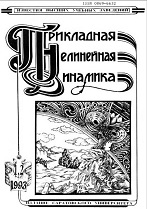|
NONLINEAR WAVES. SOLITONS. AUTOWAVES. SELF-ORGANIZATION
Frequency entrainment and anti-entrainment of coupled active rotators synchronized by common noise
A. V. Dolmatovaab, D. S. Goldobinac, A. S. Pikovskyde
a Institute of Mechanics, Ural Branch of RAS, Izhevsk
b Institute for Information Transmission Problems of the Russian Academy of Sciences (Kharkevich Institute), Moscow
c Perm State National Research University
d Lobachevski State University of Nizhni Novgorod
e Universität Potsdam, Institut für Physik und Astronomie
Abstract:
Topic and Aim. We study the effect of common noise on the ensemble of coupled active rotators. Such a noise always has a synchronizing effect on the system, whereas the coupling may be attracting (synchronizing) or repulsing (desynchronizing). For this reason, the case when both the common noise and the coupling simultaneously influence the dynamics of the system is of great interest. The paper aims are to construct a theory describing the behavior of the ensemble of coupled active rotators subject to common noise and to analyze all possible states in the system. Methods. Phase description is adopted for active rotators. We develop an analytical approach based on a transformation to approximate angle-action variables and averaging over fast rotations that allows to analyze the dynamics of the system. Results. For identical rotators, we describe a transition from full to partial synchrony at a critical value of repulsive coupling. For ensembles of nonidentical rotators, we show that although the common noise synchronizes the phases of the rotators, the frequency locking becomes imperfect due to the fact that the noise causes episodic phase slips. For moderate repulsive coupling, even more nontrivial effect occurs: strong common noise can lead to a high degree of synchrony, where a juxtaposition of phase locking with frequency repulsion (anti-entrainment) is observed. We show that the frequency repulsion obeys a nontrivial power law. Discussion. Comparison of the results for the active rotators model with those for the Kuramoto-Sakaguchi system of coupled oscillators shows that the basic effects are similar in these setups. However, technically the analysis of the active rotators is more involved. The developed analytical theory is confirmed by the results of direct numerical simulation.
Keywords:
synchronization, stochastic processes, common noise, active rotators.
Received: 18.09.2019
Citation:
A. V. Dolmatova, D. S. Goldobin, A. S. Pikovsky, “Frequency entrainment and anti-entrainment of coupled active rotators synchronized by common noise”, Izvestiya VUZ. Applied Nonlinear Dynamics, 27:6 (2019), 91–112
Linking options:
https://www.mathnet.ru/eng/ivp351 https://www.mathnet.ru/eng/ivp/v27/i6/p91
|

| Statistics & downloads: |
| Abstract page: | 176 | | Full-text PDF : | 76 |
|




 Contact us:
Contact us: Terms of Use
Terms of Use
 Registration to the website
Registration to the website Logotypes
Logotypes







 Citation in format
Citation in format 